Guatemala is the only country in the Caribbean, 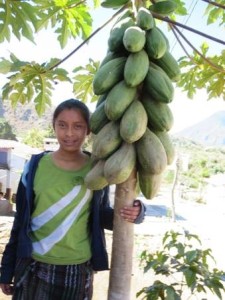 Central or South America that has chronic malnutrition. It actually has the 4th highest rate in the world. This leads to high infant mortality rates and stunting of growth.
Central or South America that has chronic malnutrition. It actually has the 4th highest rate in the world. This leads to high infant mortality rates and stunting of growth.
The problem is not caused by a lack of healthy foods in the market as there is an abundance, but by the poor quality of eating habits, minimal nutrition knowledge and a lack of funds to purchase food.
Malnutrition is rife and there is no easy solution. It will take many years and numerous projects to make a dent in it, but you have to start somewhere. Aldea Maya started with a papaya project. Papayas are an excellent source of vitamins and micronutrients, grow rapidly, require minimal land and produce fruit year round.
We chose to start with a Grade 3 class in the Chukumuk school. We first had to introduce the concept of vitamins. We focused on Vitamins A and C. This was not a random choice as Vitamin A deficiency is a huge problem in Guatemala. However, the government decided to combat this problem by fortifying white sugar as it is the only product that the indigenous population consumes in abundance. We will leave a discussion on the epidemic of dental caries for a future article!!!!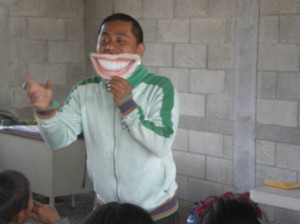
Due to the age of the students, we kept the classes fun and basic, using images of large eyes, toothy grins and bones to demonstrate the role of the vitamins in the diet.
As papayas are not the only source of vitamins A and C, we also bought every vitamin A and C containing food available in the market. We then played a memory game using the foods to reinforce the concept of availability.
 The next step was to make a papaya or melon smoothie with the students. You can imagine the excitement of the children as they get to use knives, cutting boards and a blender, and then consume a yummy drink.
The next step was to make a papaya or melon smoothie with the students. You can imagine the excitement of the children as they get to use knives, cutting boards and a blender, and then consume a yummy drink.
Each student receives a papaya plant to take home. Therefore, our next class is learning about the care of a plant. They learn about the role of roots, leaves, water, sun and soil. We then plant a papaya plant in the school yard to demonstrate the concept.
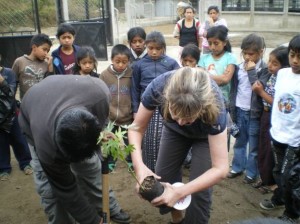 A young papaya plant is unbelievably fragile, much like a thin stalk of asparagus, and can be easily snapped by a ball or eaten by a chicken. As a result, the students need to collect sticks to build a barrier around it.
A young papaya plant is unbelievably fragile, much like a thin stalk of asparagus, and can be easily snapped by a ball or eaten by a chicken. As a result, the students need to collect sticks to build a barrier around it.
The students are beyond excited when it is the day to receive their plant. We explain how they are the plant’s mom and responsible for its survival. If the plant is taken care of it will have over 40 large papayas growing on it in one year and it produces fruit year round. The families can eat, sell or trade the papayas. It costs $2 to purchase the papaya plant and at least $2 to buy a papaya in the market. This project is a viable economic solution.
You may be wondering how much it costs us to operate this program. In 2013, there were 80 students in Grade 3. It costs $2 per plant, $1 for each bag of organic compost (essential as Chukumuk’s soil is horrendous), $20 for the food in the market and $ 30 for the smoothies. Therefore, for around $400 we have introduced a year round supply of nutritious food to 80 families and empowered 80 students.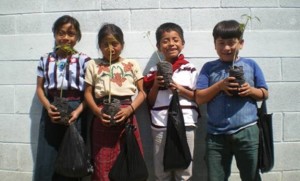
If anyone would you like to help our nutrition and garden projects in Chukumuk, it is easy. Just purchase one of our garden Christmas or Hannukah cards and any purchase of $20 or more receives a tax receipt. Details can be found on the Aldea Maya website.
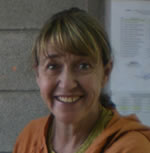 Louise Sosa
Louise Sosa
Aldea Maya
Louise Sosa is a retired teacher and dietitian. Originally from Australia, she immigrated to the west coast of Canada as a young child. In the mid-80s, after completion of nutrition training at UBC and a dietetic internship, she moved to England where she was hired by Volunteer Services Overseas (VSO) to be an English and Home Economics teacher in Belize. After obtaining her post grad in primary education, Louise began her teaching career in 1993. She formed the “Haiti Club” in the middle school where she taught and they built a school in Haiti. After nine years teaching, Louise retired due to arthritis. In 2007 a trip to visit her sponsor children started the Guatemala adventure and Aldea Maya.
See all articles by Louise Sosa



